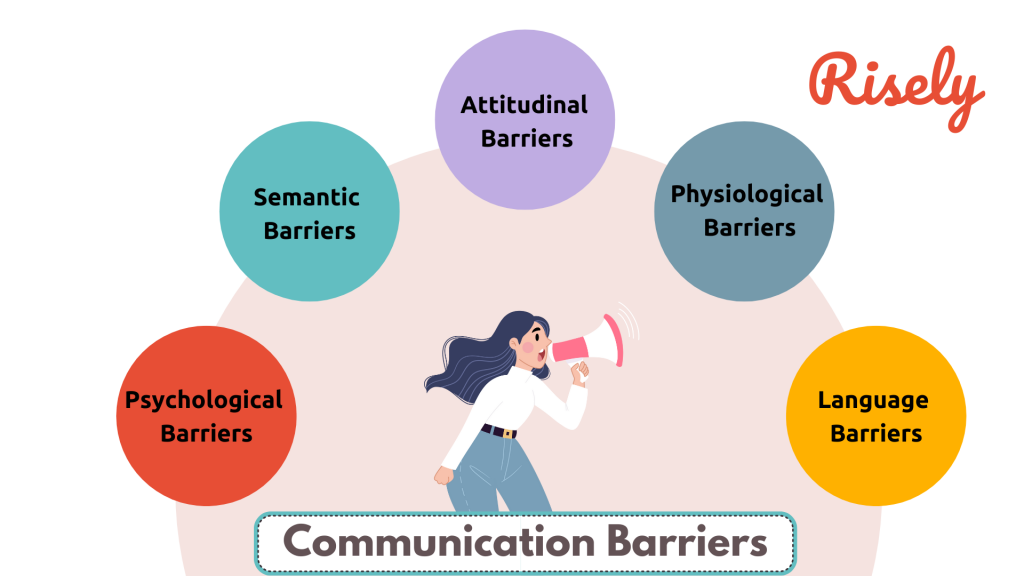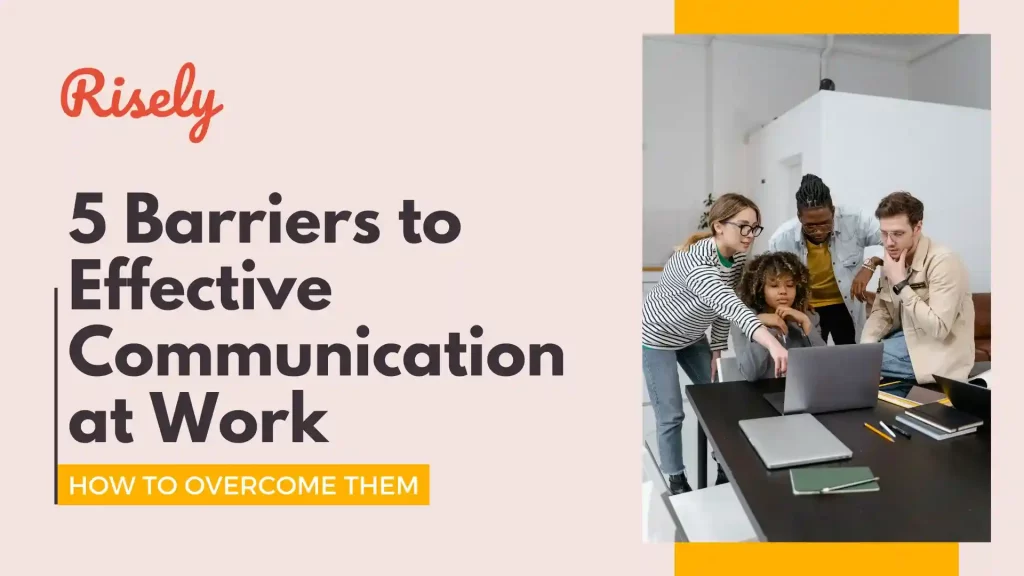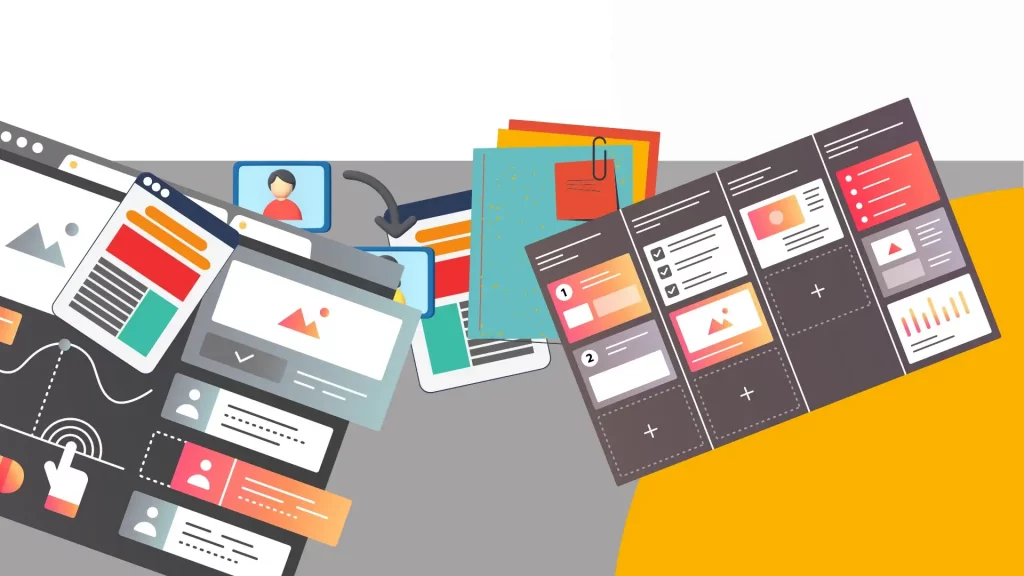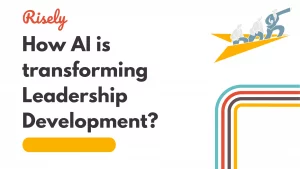What are communication barriers?
Communication barriers refer to any obstacle or hindrance that prevents the smooth and effective exchange of information between individuals or groups. These barriers can take many forms and impact various communication aspects, such as understanding, expressing, listening, and interpreting messages. They can be internal, such as a lack of confidence, or external, such as a physical environment that makes it hard to hear or see the person communicating. Communication barriers can occur at any stage of the communication process and can have a detrimental effect on the quality and outcome of the communication. They can lead to confusion, misunderstandings, and frustration and negatively impact personal and professional relationships. Understanding and identifying communication barriers is the first step towards overcoming them and effectively communicating with others.Identifying communication barriers at work
Here are a few signs that indicate the presence of communication barriers in your teams. If you notice some of these, it is high time to take action:- Look for signs in nonverbal communication: If you often find team members confused and wondering, they might lack accurate or adequate information. Similarly, if your team is frustrated or disengaged during meetings or conversations, it may indicate a communication barrier.
- Listen Actively: Actively listen to what people are saying. If you notice employees frequently asking for clarification or repeating themselves, it may suggest that messages are not effectively understood.
- Review Written Communication: Examine written communication, including emails and reports, for clarity and effectiveness. Poorly structured or confusing written messages can be indicative of a communication barrier.
- Assess Interactions: Analyze interpersonal interactions within the workplace. If there are frequent misunderstandings, conflicts, or misinterpretations, there may be underlying communication barriers.
Types of Barriers to Effective Communication and How to Overcome Them
Communication barriers prevent the effective exchange of ideas, thoughts, and feelings between individuals or groups. These barriers to effective communication can take many forms and significantly impact our ability to connect with others and convey our message. Some common types of barriers to effective communication include:
Psychological Barriers
A psychological barrier is a type of communication barrier that refers to an individual’s mental or emotional state that prevents them from effectively communicating. These barriers can take many forms and can be caused by a variety of factors, such as:- Stress and anxiety: When an individual is feeling stressed or anxious, it can be challenging to focus and effectively communicate their thoughts and ideas
- Fear and insecurity: Fear of rejection or failure or insecurity about one’s abilities can make it hard for an individual to communicate effectively
- Biases and stereotypes: Preconceived notions or biases towards certain groups or individuals can impact an individual’s ability to communicate effectively and lead to misunderstandings or discrimination
- Emotional state: Being in an emotional state, such as anger or sadness, can affect an individual’s ability to communicate effectively, making it hard for them to think clearly and articulate their thoughts and feelings
- Lack of confidence: When individuals need more confidence in their abilities or the message they are trying to convey, it can prevent them from effectively communication.
Example of psychological barrier to communication: John, a team head, is inherently resistant to change and displays frustration and negativity when a new company policy is announced. John’s resistance influences the team members, making it difficult for them to accept the change and adapt positively.
How to overcome psychological barriers to communication?
Overcoming psychological barriers to effective communication requires addressing the underlying emotions and mental states causing the barrier. This can be done through self-reflection, therapy, or stress management techniques.- Build self-confidence and self-awareness: An increased awareness of the self and others around us helps become more confident. In workspaces, presenting dissenting ideas and unconventional suggestions might be stress-inducing. The solution lies in trusting yourself and your ideas to be credible.
- Let go off biases and stereotypes: Biases and stereotypes keep us away from many opportunities for the team. Enter the workplace with an open mind and objectivity. Keep your personal judgment at bay when you are making decisions.
- Develop a growth mindset: More often than not, a weak emotional state or the inability to express limits us in teams. Developing a growth mindset helps managers cross self-imposed unhealthy borders that restrict them.
Semantic Barriers
Semantic barriers refer to difficulties that arise in the meaning and interpretation of words and symbols used in communication. These barriers to effective communication can occur when the sender and receiver of a message have different understandings of the words or symbols being used. Some examples of semantic barriers include:- Jargon: The use of specialized language or technical terms that are not commonly understood by the intended audience can make it difficult for them to understand the message
- Ambiguity: The use of vague or unclear language can make it difficult for the receiver to understand the intended meaning of the message
- Misinterpretation: The receiver may interpret the message differently from how the sender intended it due to differences in cultural or personal perspectives
- Stereotypes: Using stereotypes or generalizations in communication can lead to misunderstandings and perpetuate harmful biases
- Assumptions: Making assumptions about the other person’s knowledge or understanding of a topic can lead to gaps in communication
Example of semantic barrier to communication: During a presentation, Tara, an engineer, uses highly specialized jargon and acronyms without providing explanations. The audience, which includes non-technical staff, struggles to grasp the content due to the use of complex and unfamiliar terminology.
How to overcome semantic barriers to effective communication?
To overcome semantic barriers, it is essential to use clear and specific language, avoid jargon and technical terms when communicating with non-experts, and provide context and explanations when necessary. It is also crucial to be aware of one’s biases and stereotypes and avoid making assumptions about the receiver’s understanding.- Use simple and clear language: Using too many technical terms can confuse people. Instead, try to use a language which your audience understands easily. Avoid heavy jargon that is industry specific and comprehensible for only a few people.
- Ask questions: Miscommunication goes unchecked if there is no cross-questioning. Hence, ask questions to clarify things and address any possible ambiguities.
- Active listening: Practice active listening to ensure that you are taking in everything that the person is actually saying. Understand and reflect on their messages, not just hear them!
Physiological Barriers
Physiological barriers refer to difficulties that arise due to physical limitations or conditions that can make it difficult for an individual to communicate effectively. These barriers can include the following:- Hearing or vision impairment: A person with a hearing or vision loss may have difficulty understanding or being understood by others.
- Speech disorders: A person with a speech disorder, such as stuttering or a lisp, may have difficulty speaking clearly, making it hard for others to understand them.
- Fatigue: A fatigued person may have difficulty focusing or staying alert, making it hard for them to communicate effectively, learn more about workplace fatigue.
- Illness: A person who is ill may have difficulty speaking or thinking clearly, making it hard for them to communicate effectively.
Example of physiological barrier to communication: A person with severe hearing loss trying to participate in a verbal team meeting without appropriate assistive devices. Their hearing impairment prevents them from fully understanding and engaging in the conversation.
How to overcome physiological barriers to effective communication?
To overcome physiological barriers, it is essential to be aware of and understand the limitations of the person you are communicating with and make necessary accommodations. This can include providing materials in alternative formats, such as large print or audio, or using assistive technology. Additionally, being patient, understanding, and flexible can help to ensure that the person with a physiological barrier can effectively communicate. Moreover, managers should ensure that they are considering their team’s wellness, issues like sleep deprivation could be hampering their productivity due to poor work life balance. Check out 9 Communication Problems In The Workplace That Limit Growth And SolutionsLanguage Barriers
Language barriers refer to difficulties that arise when communicating with individuals or groups that do not share a common language or have different levels of fluency. These barriers can include the following:- Vocabulary: A lack of familiarity with certain words or phrases can make it difficult for an individual to understand or be understood.
- Grammar: Different grammar or sentence structures can make it difficult for an individual to understand or be understood.
- Pronunciation: Differences in pronunciation can make it difficult for an individual to understand or be understood.
- Idioms and expressions: Idioms and phrases that are specific to a language or culture can be challenging to understand for someone who is not familiar with them.
- Accent: A heavy accent can make it difficult for an individual to understand or be understood.
Example of language barrier to communication: In a multicultural workplace, a non-native English speaker tries to communicate an idea in English during a group discussion but has limited proficiency in the language. As a result, the message is not effectively conveyed, leading to misunderstandings among colleagues.
How to overcome language barriers to communication?
To overcome language barriers, it is essential to use clear and simple language and to avoid idioms and expressions that may not be understood. Additionally, using visual aids, such as pictures or diagrams, can help to convey the message. It is also essential to be patient and understanding and to ask for clarification if necessary. Additionally, using translation services or hiring a translator can help overcome language barriers in professional or official settings. Check out The most important words of a manager’s vocabularyAttitudinal Barriers
Attitudinal barriers to effective communication refer to difficulties that arise from negative attitudes or perceptions that can make it difficult for an individual to communicate effectively. These barriers can include the following:- Prejudice: Prejudice or bias towards specific individuals or groups can make it hard for an individual to communicate effectively with them.
- Stereotypes: Holding stereotypes or generalizations about particular individuals or groups can lead to misunderstandings and can make it hard for an individual to communicate effectively with them.
- Lack of respect: A lack of respect for the other person’s ideas, opinions, or feelings can make it hard for an individual to communicate effectively with them.
- Assumptions: Making assumptions about the other person’s knowledge, understanding, or intent can make it hard for an individual to communicate effectively with them.
- Resistance: Being resistant to change or new ideas can make it hard for an individual to communicate effectively with others.
Example of attitudinal barrier to communication: An employee who holds a strong bias against a coworker due to past conflicts or differences in opinions dismisses the coworker’s ideas without considering their merit. This negative attitude hinders effective collaboration and communication within the team.
How to overcome attitudinal barriers to communication?
To overcome attitudinal barriers, it is vital to be aware of and address any prejudices, biases, or stereotypes that one may have. Additionally, showing respect and being open to the other person’s ideas, opinions, and feelings can facilitate open communication. It is also essential to be aware of one’s assumptions and avoid assumptions about the other person’s understanding or intent. Additionally, being open to change and new ideas can help to overcome resistance and facilitate effective communication. Check out How To Practice Effective Communication In Leadership: A Guide For Leaders
How to overcome barriers of communication?
- Clarity before communication: Before communicating, it’s essential to define the message and purpose. This will help to ensure that the message is understood as intended.
- Tailor communication to the receiver’s needs: The sender should be aware of the receiver’s communication style, preferences, and demands and adapt their communication style accordingly.
- Consult others before communicating: Consulting with others can help ensure that the message is clear and that all perspectives are taken into account.
- Be aware of the tone, content, and language of the message: The tone, content, and language of the message should be appropriate for the audience and the situation. It’s essential to be aware of how the receiver perceives the message and adjust accordingly.
- Convey helpful information to the listener: The message should be relevant and valuable to the receiver and address their needs and concerns.
- Keep the message consistent: The message should be consistent across different communication channels to avoid confusion and misunderstandings.
- Follow-up communication: Following up on previous communication can help to ensure that the message was understood and that any issues have been resolved.
- Use active listening techniques: Active listening is essential to effective communication. It involves paying attention to the speaker, understanding their message, and responding appropriately.
- Encourage feedback: Encouraging feedback and asking for clarification can help ensure that the message is understood as intended. This can be done through open-ended questions that facilitate active listening, and seeking clarification if necessary.
What are the Different Ways of Improving Communication?
Several strategies can be used to improve communication barriers:- Active listening: By actively listening and paying attention to the other person, you can better understand their message and respond accordingly.
- Clarity and simplicity: Using clear and simple language can help ensure that the message is understood.
- Nonverbal communication: Paying attention to body language, facial expressions, and tone of voice can help to convey the intended message.
- Empathy: Empathy is putting oneself in the other person’s shoes and understanding their perspective can help to facilitate effective communication.
- Cultural sensitivity: Being aware of and respectful of cultural differences can help to overcome cultural communication barriers.
- Flexibility: Being open to different communication styles and adjusting one’s own communication style can help overcome barriers.
- Feedback: Encouraging feedback and asking for clarification can help ensure that the message is understood as intended.
- Professional help: Seek professional help if the barriers are emotional or psychological, such as therapy or stress management.
Summing Up
As we wrap up this blog, it’s clear that there are plenty of ways that communication gets disrupted at work. A lot of times, it may happen without any signs. Communication barriers can be challenging to notice as well. But, over time, they can create a lot of challenges for your team. Hence, if you often find yourself stuck in the middle of communication problems, it may be time to sit down and identify the communication maladies hurting your team! The good news is that with a little effort and understanding, we can overcome these barriers and improve our communication skills. By being aware of any prejudices, biases, or stereotypes that one may have, showing respect and being open to the other person’s opinions and feelings, being open to change and new ideas, using appropriate and updated technology, using translation and interpretation services, it is possible to overcome barriers to effective communication and improve the quality of communication.Are you prepared to overcome the barriers of communication?
Take the free communication skills self-assessment for managers to test your skills now
Overcoming Barriers of Communication FAQs
What are the most common communication barriers at work?
What is the importance of effective communication for a manager?
Why are communication barriers a major concern to deal with for a manager?
– higher conflicts
– bad relationship and environment
– misunderstandings






